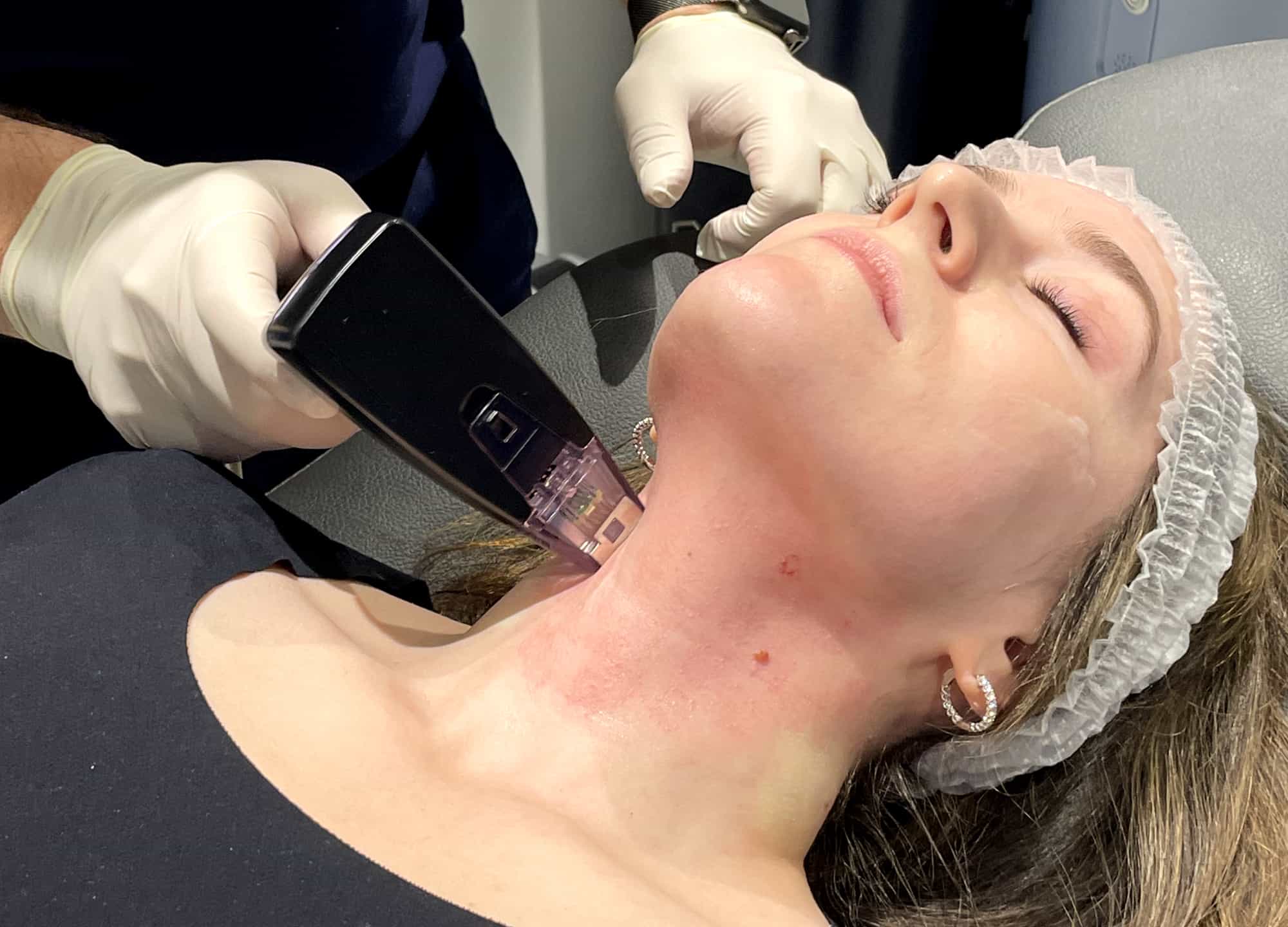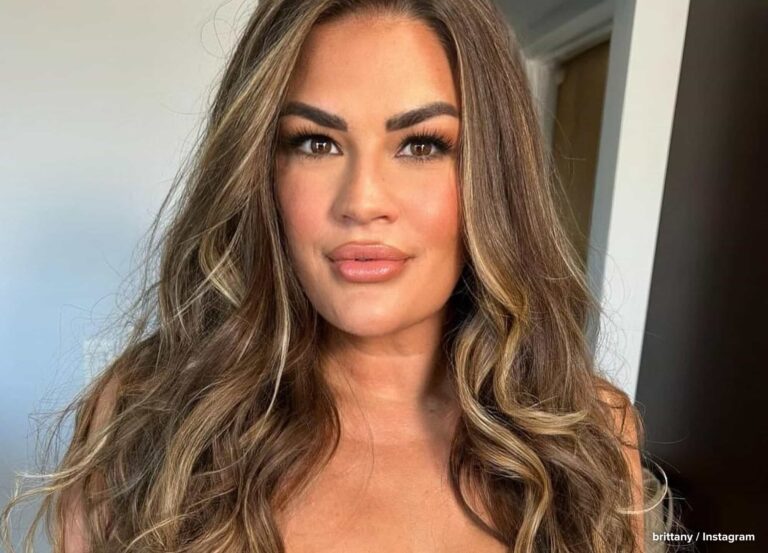Featured Expert
Dr. Richard Westreich, a board-certified facial plastic surgeon in New York City
It seems like everyone, everywhere, is talking about Morpheus8. It’s one of the rare aesthetic procedures that even aesthetic newbies refer to by the brand name rather than just call it radiofrequency microneedling. It’s also often referred to as a nonsurgical facelift, but if you’ve been on RealSelf for a while, you know there’s really no such thing. However, there are procedures that can help stave off surgery if you’re savvy enough to plan ahead. Morpheus8 falls into that category, and so long as you’re seeing a skilled provider for your treatment, the results can be truly impressive. However, we’ve found that when most people talk about their own treatment experience, they often add the caveat “but it’s soo painful.”
Why I tried Morpheus8 on my face and neck
However, as the French adage goes, one must suffer to be beautiful—and saggy necks run in my family. I’ve tried plenty of uncomfortable aesthetic treatments in my day, and I’d rather subject myself to 20 minutes of physical pain than to the mental torture of writing a huge check for a facelift and neck lift. So I booked an appointment with Dr. Richard Westreich, a board-certified facial plastic surgeon in New York City, to get treated from the mid-cheek all the way down the neck with Morpheus8. (In addition to staving off a future lift or two, I was hopeful I could smooth out some of my “tech neck” lines.)
While I’d emotionally prepared myself for the potential pain of 24 needles being inserted into my face dozens of times, nothing could have prepared me for the sight of an enormous syringe—that apparently was going to be used on me! I thought I was just going to be slathered with numbing cream, but no: Dr. Westreich uses both numbing cream and a nerve block to manage patient pain. “When you see a plastic surgeon for Morpheus8, we treat it like plastic surgery,” he told me.
In case you’re unfamiliar, a nerve block is a pain-management technique used by many docs, including plastic surgeons; a numbing medication is injected into a cluster of nerves, which temporarily stops pain signals. In my case, that cluster of nerves was Erb’s point, which is located square in the middle of the large, ropey muscles that run along the sides of the neck (think Frankenstein’s monster’s neck bolts). Blocking those nerves would numb the entirety of my neck, which is said to be one of the most painful areas to treat with microneedling.
Any anxiety I had about the microneedling was quickly redirected into the thought of the disturbingly girthy needle of this huge syringe stabbing me in the neck. Twice. Before going for it, however, Dr. Westreich pulled out a much smaller syringe and injected me in the same spot. “You’re going to thank me for this,” he quipped. That syringe was filled with a local anesthetic, so I couldn’t feel the nerve block being injected next ( I didn’t). And in just a few minutes, I felt the mix of lidocaine and epinephrine starting to kick in. I was then slathered with a heavy-duty numbing cream that Dr. Westreich referred to as BLT (benzocaine, lidocaine, tetracaine), which was mostly applied at the jawline and up to the midface, as the nerve block would take care of the rest. A piece of plastic wrap was laid on top, to help the cream absorb more deeply.
What Morpheus8 treatment felt like
After we waited about 20 minutes for the numbing cream to finish taking effect, my treatment session started. “We’re going to do one pulse, to see how it feels,” Dr. Westreich said. I felt something lightly touch the corner of my jaw and heard the beeping and pulsing sound of the device. “Wait, did you do it?” I asked. He had—and I had felt nothing. He then began my treatment session in earnest, methodically pulsing the device against the underside of my jaw, moving from below my ear to right beneath my chin, which was the only place that felt a little tender. Until that point, I really hadn’t felt much of anything. “The nerve block can’t reach the chin well,” Dr. Westreich explained. “I’ll finish this side and the other side before treating higher up.” He used the device all along the right side of my neck and repeated the process on the left, then let me know that we were going to start treating my face. By the time we were done from the chin down, the numbing cream had fully set in. Dr. Westreich did another test pulse, this time on my lower cheek. I could feel it, but it was completely tolerable—I’ve had more painful bikini waxes.
I find that with a lot of uncomfortable aesthetic procedures, the anticipation of the treatment tends to make the pain seem far worse than the treatment itself does. With microneedling, a few stinging pulses will make you brace yourself for each subsequent pulse, which is physically and mentally taxing. I tense up my whole body, ball my hands into fists, and wait for the treatment to end. This is tolerable for a neurotoxin appointment—there are maybe 20 or so shots, and I just have to hold on for about five minutes. But with professional microneedling, I have to go through it at least 100 times.
Because of the nerve block, I never went through this at all. My body was fully relaxed during treatment, even though I received a whopping 261 pulses, with the needles being inserted into my skin at a depth of three millimeters. Dr. Westreich also likes to “double stack” pulses, meaning that the needles punctured my skin once but the energy was fired into the skin twice. “You’re delivering a higher amount of energy to that exact place,” he explained. “So the idea is, you’ll get more collagen denaturing and you’ll get more shrinkage.” This makes for a more intense treatment—intensity that I couldn’t feel, thanks to the nerve block—and provides a more dramatic result.
What I could feel, however, was the unusual sensation of the needles coming out of my skin—sometimes they seemed to “snag” on the way out, like when removing a staple from a piece of paper, though it wasn’t painful. I also noticed that I occasionally got a whiff of what smelled like burning hair during the treatment, but nothing as alarming as a bad encounter with a flatiron. (This makes sense to me—remember that both hair and skin are packed with the same protein, keratin, and heat energy was being pushed into my skin. Dr. Westreich used 35 joules of energy during my treatment. “I tend to use higher energies because I do the nerve block and patients then can handle it,” he said.)
My Morpheus8 recovery
I felt a little edgy hopping out of the treatment chair at the end of my session—I tend to be very sensitive to epinephrine—and felt like I was talking a mile a minute as Dr. Westreich’s team sent me off with a small container of Aquaphor to apply once I got back to my apartment. I often choose to wear a paper mask on my trip home from procedures, but because I was just three blocks away, I let my skin breathe. My skin wasn’t as red as I’d anticipated it would be, and I barely got any sidelong glances from passersby as a result. My skin was so comfortable that I quickly forgot I was treated at all—until I went to tuck my hair behind my ear for the first time. Excluding my face, I was numb from the ears down to my clavicles for about six hours. Though this was disconcerting, it didn’t affect my mouth at all, so my ability to eat was unhindered, and by the time I woke up the next morning, all sensation had returned.
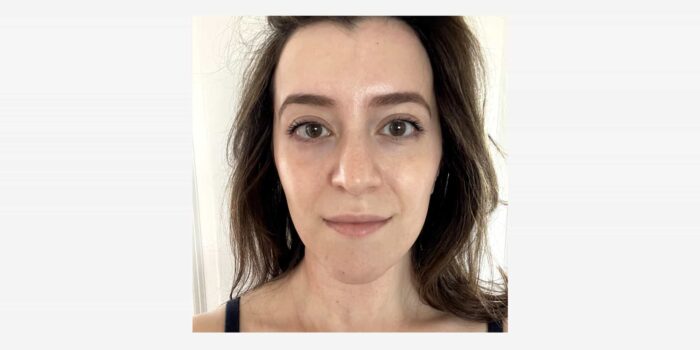
I tend to heal reasonably well, though I’ve bruised and looked fully flushed the day after microneedling in the past. But this time, there was no bruising and only a minimal amount of redness. I must admit that I slightly snubbed my aftercare instructions—being a big fan of exosome therapy, I chose to apply a base layer of (plated) Skin Science Daily Serum ($268) beneath my Aquaphor immediately afterward and for a few days post-procedure, to accelerate wound healing; I think this went a long way toward keeping my skin looking soothed and calm. What was most noticeable was some pinprick redness and light scabbing. After 48 hours, when mineral sunscreen was back on the table, I easily hid this with my trusty SkinBetter Science Tone Smart SPF 75 Sunscreen Lotion ($75).
It was at six days after treatment that I was allowed to resume using my regular skin-care routine, and I was admittedly thirsty for it and eager to exfoliate. I was starting to break out on my chin and jaw, and I desperately wanted to get rid of the coarse, gridlike texture on my skin from the needles. Mara Beauty Algae Enzyme Cleansing Oil ($58) was a godsend during this time—over the next week, it flooded my skin with moisture while gently sloughing away the rough, dead skin on the surface of my face.
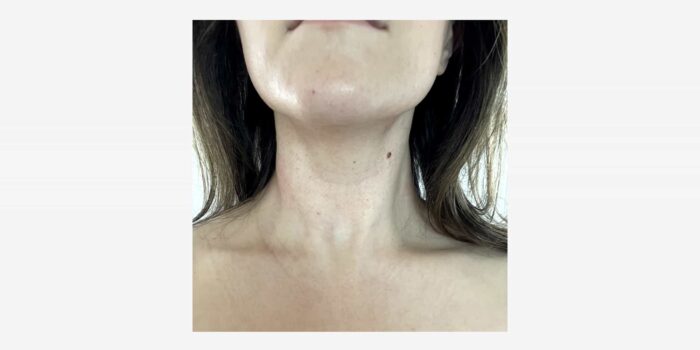
My neck was a different story though. Two weeks post-procedure, the texture was slightly improved but remained—the redness was gone, so it really just looked like goosebumps. I saw Dr. Westreich about three weeks after my treatment, and he said this was normal. “The skin on the neck has slower turnover and fewer sebaceous glands,” he explained. “We also treated that area more deeply.” He told me that ahead of Morpheus8, he’ll pretreat dark-skinned patients with a bleaching agent. “They can get postinflammatory hyperpigmentation marks that last for months,” he said. The inflammation that can cause discoloration in some also happened to be to blame for my chin acne. “Because of the swelling of the skin and higher metabolic activity, your pores will have a tendency to get clogged,” Dr. Westreich said, noting that many rhinoplasty patients have to manage acne for months.
While I’m hopeful that I won’t have to combat lingering blemishes for a few months after my Morpheus8 treatment, it should take that long to see the true results of my procedure. According to Dr. Westreich, the best patient outcomes are cumulative, as it often takes about six months to see the true contouring and firming effects of the initial treatment. But even so, I think I’m ahead of the curve: we could see an improvement to my neck lines in just a few weeks as well as a softening of the deep crease on the side of my mouth.
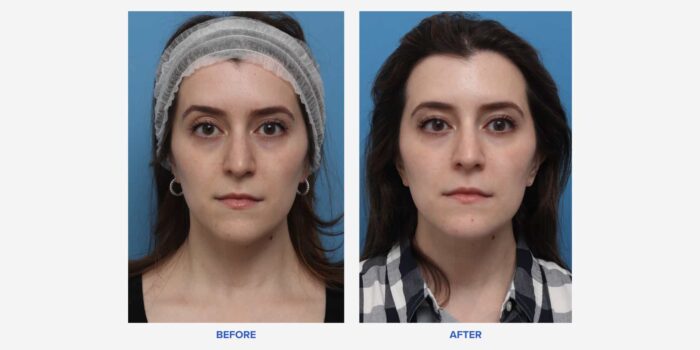
There are studies showing that psychological stress can delay skin healing; research also shows that physical pain can have adverse effects on healing. It’s truly my belief that because I felt absolutely no pain during Morpheus8 treatment, my skin is healing faster and better than it would have if I’d not gotten a nerve block. I’m already satisfied with my results, but knowing that they’ll only improve from here is exciting—I can’t wait to see how my skin evolves over the next few months.







